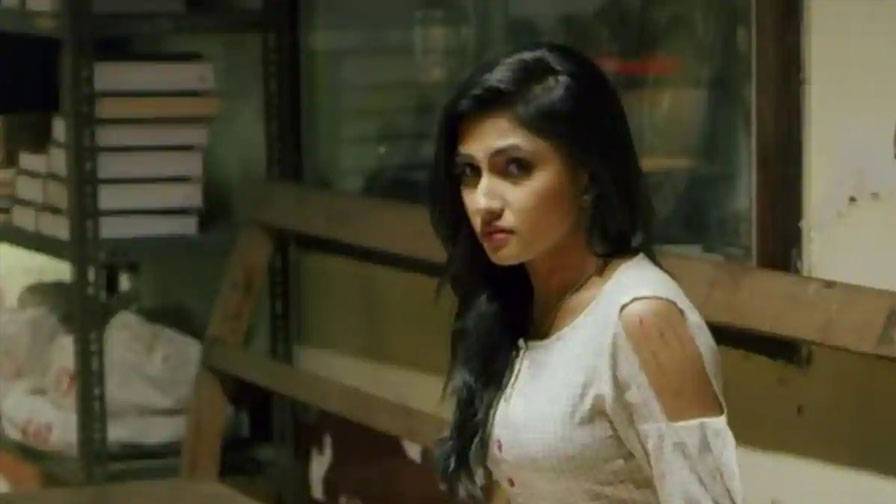It is nine months now since the curtains were called on a thriving Sandalwood industry that had to shut shop when Corona came calling.
The pandemic has had the entire world under its virulent tentacles, spreading dread and death, virtually putting an end to public entertainment in its conventional and traditional sense; theatres and multiplexes shutting down for fear of the spread of the virus in community surges.
Cancellations or postponements of film festivals and other film screenings were the order of the day while the world grappled with finding a quick off-the-shelf vaccine to check Corona in its stride.
Soon, as months passed by, you have had “hybrid” forms of both digital and theatrical screenings of films being experimented with in the hope the enduring allure of movies would draw the entertainment opiated audiences back while lockdowns were lifted and ‘social distancing’ norms became the new standard operating procedures for public entertainment.
While the film industry, the world over, grappled with the new Standard Operating Procedures by which they could bring the opiate of the masses to their neighbouring theatre screens, the Kannada film industry too had to face the harsh reality of the new Covid-carved script.
Nearer home, not too long ago, you had the nerve centre of the Kannada film business—KG (Kempe Gowda) Road—bustling and teeming with die-hard and entertainment-seeking film buffs queuing up at the last vestiges of a handful of single screens that dotted its surroundings.
 Huge posters and cut-outs, traditional drums and percussion instruments and bursting of crackers, and dousing the cut-outs of favourite stars in milk, to sound the arrival of a new film at the theatre in all attendant fanfare were the fanboys’ way of greeting their reel gods.
Huge posters and cut-outs, traditional drums and percussion instruments and bursting of crackers, and dousing the cut-outs of favourite stars in milk, to sound the arrival of a new film at the theatre in all attendant fanfare were the fanboys’ way of greeting their reel gods.
Even as each rising multiplex and mall sounded the death knell of the once upon a time pride of the Capital City Bengaluru, the single screens that purveyed ‘entertainment’ in multiple languages, thereby, acting as a unifying force of humanity, saw the arrival of Corona. In its wake, the very survival of the industry was put in jeopardy.
From the month of March onward, you had the entire spectrum of the entertainment sector down shutters, as nations and governments grappled with the pandemic. Corona, like other epidemics and pandemics that have tested mankind’s resilience to fight the fatal diseases, has brought in a whole new lexicon of transaction by which the entertainment industry would conduct its business in future.
Herein lies the nub of the problem that has put paid to Kannada Cinema’s otherwise unfettered stride in its over glorious 85-year chequered history.
The Kannada film industry, in earlier times, was bogged down by the hegemony of other language films—in particular, Hindi films from Bollywood and English films from Hollywood; in addition to Tamil, Telugu, and Malayalam from its southern siblings; and on top of all this, Bengali and Marathi too.
It recently started getting into its own rhythm and finding its feet. So much so that it had pipped the much-envied Hindi cinema to the top spot as the highest film- producing industry in India. More happily so, giving the likes of big budgeted Bahubali and the like competition a taste of its own medicine.
The last decade had seen Kannada Cinema on a great trot churning out more than 300 plus films a year in regimental fashion, both nurturing content-driven films and action surcharged, larger-than-life character-dominated money-spinners.
According to Karnataka Chalanachitra Academy Chairman Sunil Puranik, Sandalwood’s annual turnover was around Rs 1,000 – Rs 1,500 crore. In addition to films, it produced quite a number of television shows as well.
You had Rocking Star Yash’s KGF: Chapter 1, Rakshit Shetty’s Avane Srimannarayana, Rishab Shetty’s Bell Bottom, Raj B Shetty’s Ondu Motteya Kathe, Raam Reddy’s Thithi, Rama Rama Re and the like ensure that the competitive film industry marquee sit up and take notice of Kannada Cinema. Bollywood, in fact, picked up a few to be remade in Hindi.
The 85-year-old Kannada film industry, which was enjoying an unprecedented productive spell of late, was suddenly left reeling under the deathly impact of Covid and was served a “death warrant.” Corona struck like a lightening out of the blue just as the Kannada film industry started to expand its regional imprint. It ground to dust all the good work and brownie points that the Kannada film industry had achieved in the last few years, leaving it totally adrift and in dire straits with a bleak and uncertain future driving it back to the drawing boards.
The situation seemed very reminiscent of the troublesome and traumatic 105 days that the Kannada film industry had voluntarily shut down following the kidnapping of Sandalwood’s father figure thespian Dr Rajkumar by dreaded sandalwood smuggler Veerappan. The industry began to re-function only after the much-revered Annavaru was returned back into their midst and normalcy was ensured at KG Road and all across the State.
Today though you have the industry stakeholders sitting on the edge of the fence with their monies locked up, wondering whether to take that leap of faith and board the Over The Top (OTT) bandwagon or wait for further normalcy to return for single screen theatres to function. Meanwhile, the losses incurred with each passing day due to this indecision is mounting tremendously.
Darshan starrer Robertt, Puneeth Rajkumar’s Yuvarathna, Yash’s KGF: Chapter 2, Kotigobba-3, and Salagaare some of the many such big ticket films waiting in the wings for a much more conducive milieu to return to ensure that die-hard fans will fall back to the theatres to watch their favourite stars in action.
A noted Kannada film producer notes that the pandemic induced paralysis of the film industry seems like a death warrant handed to people like him. He dismissively states that it is a waste of time to speculate when a vaccine would provide the sliver of silver lining for the industry in deep freeze, and that if the current situation persists, only divine intervention can save the industry.
As part of its structured lifting up of its lockdown policy, the Centre recently gave the green signal for single screen halls and multiplexes to open from October 15 with the rider of only 50 per cent capacity.
Mansore of Nathicharami fame took the bold decision of testing the waters with the release of his latest visitation at the turnstiles, Act 1978, in cinema halls. It was the first South Indian film release in a theatre post lockdown. However, on the first day, only a few brave hearts were in attendance, the fear of Corona possibly at the back of their minds. It is to be seen how many like Mansore will bite the bullet of uncertainty and release their big ticket heavy-budgeted star-shouldering films in the single screens in these uncertain times.
The director, however, exudes confidence that that this is the right time to release smaller films at theatres since there would be no big-budget films to steal the thunder. According to him if his film even runs to 50 per cent capacity for at least three weeks, he would be able to recover a part of the production costs. Additionally, the OTT platform is always available post a theatrical release.
Presently 13 single-screen theatres and a host of 46 multiplex screens are soldiering on with this new gambit.
The Sandalwood mandarins though had thought it better to wait than bite the bait and burn their fingers. Hence, the release of big budgeted, mega star movies have all been put on hold in the hope of a better morrow.
This brings to mind what a character in the 1968 film 2001: A Space Odyssey states: “Don’t open the pod bay doors, HAL. We need social distancing.” It looks like the Kannada film stakeholders have pressed the pause button on film releases to ensure that they don’t suffer huge losses. The entire film industry is unanimously waiting for good times and normalcy to resume before they can breathe easy.
Of course, the OTT platforms may be providing a window of opportunity for the industry with just a handful, such as Bhinna, Law, French Birayani and Mane Number 13, taking courage to release their film on the Internet and test the pulse of the audiences.
Some have also taken to re-releasing their films on OTT platforms. However, the muted and not-at-all-encouraging reception has deterred others from sullying the fate of their ambitious projects for which they have invested humungous sums of money.
With “Social Distancing” becoming the new lingua franca of human transaction in these pandemic times and the whole world trying to adjust itself to the new social order of entertainment consumption, disruption has become the new global order in the way films are purveyed to the entertainment-starved audiences.
After a great gambol run, the Kannada film industry has been finally been zapped by an existential crisis. Compelled to press the ‘entertainment’ rethink button, it has been brought down on its knees, like the situation the world over.
Like a bolt out of the blue, [highlight background=”#f79126″ color=”#ffffff”]the Kannada film industry is faced with a new surreal Sisyphean dilemma. After scripting and spinning sagas after sagas and having the entire humanity in its thrall, it is now stumped by the Corona nemesis whose cataclysmic repercussions has shaken and stirred its very survival.[/highlight]
The life-altering Corona has sent shockwaves through the ‘entertainment’ industry, fitfully and fearfully left staring into an abyss of uncertainty working out its losses with no early succour in sight.
The Kannada film industry has indeed been pushed into a state of self-introspection and quick calculus mode, with ‘Social Distancing’ becoming the new currency of public transaction.
With people dreadful of contracting Corona, not wanting to venture into crowded theatre, these are indeed tough times for Sandalwood satraps whose huge sums have been bankrolled in films that are yet to see the light of the day.
With masks and sanitisers as additional gears for safety, how these extra appendages and expenditures are going to affect the film-going habits of the diaspora and change the very dynamics of savouring the film watching experience is to be seen.
Given that cinema is a collective experience, how the post-Corona world would pan out is very hard to hazard be it at the single screens or the plus multiplex theatres facing a bleak future despite all the safety SOPs in place.
With no quick-fix solution in sight, the entertainment industry per se is left with questions and searching for answers itself despite governmental interventions for the revival of the industry and those that are dependent on it for their livelihoods.
For now, though, the Kannada film industry can only find a sliver of hope and consolation in the words of film director Christopher Nolan, “When this crisis passes, the need for collective human engagement, the need to live and love and laugh and cry together, will be more powerful than ever.” (quoted from The Washington Post)
In that sense, in hindsight, Corona seems to be a God Send, providing the entertainment industry such as the Kannada film industry, a chance to rethink, rejig and revisit its monumental mistakes and assumption that “this is what the audience wants” and go for a complete changeover in the way the ‘entertainment’ industry functions henceforth in the near future.
With producers and exhibitors waiting for cinema halls to return to full capacity and consciously shunning the OTT platforms all hopes now lie with the early founding of a possible vaccine for normalcy to return.
Amidst this pall of gloom and despair, however, an optimistic few still hold onto the eternal hope that once the challenge of Covid 19 is conquered with the arrival of vaccine, audiences currently gorging on Netflix, Amazon Prime and other OTT streaming platform sumptuous menu of movies, would certainly throng back to the theatres.
The [highlight background=”#f79126″ color=”#ffffff”]OTT platforms have in hindsight ensured a new visual literacy to the audiences and it would be up to filmmakers from now on to match this new sensitivity and approach to cinema when they take to making films in future.[/highlight] For, the familiar olden-days dross of mundane masalas would no longer cut the ice with audiences wanting to experience cinema on the big screens.






Leave a Reply
You must be logged in to post a comment.